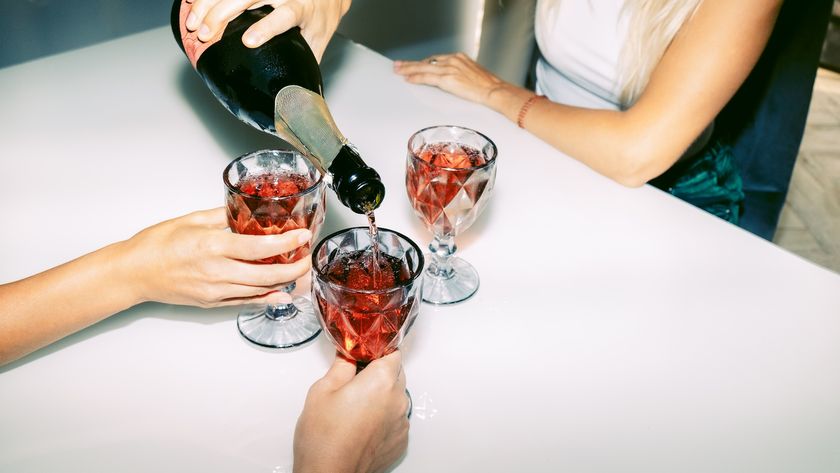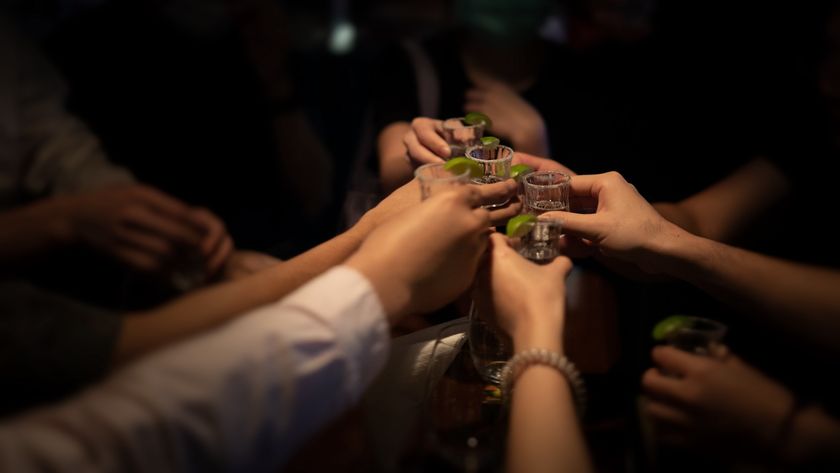Surprising Reasons You Drink Too Much Wine

Wine enthusiasts take note: you may be unknowingly serving yourself more than you think.
Exactly how much wine you pour into your glass can vary depending on the size of the wineglass, whether the glass is on the table and even the color of the wine, a new study finds.
In the study, researchers asked participants to pour themselves a "normal" glass of wine under various conditions.
When they were given a wide wineglass, participants poured themselves 12 percent more wine than when they were given a standard wineglass. [13 Kitchen Changes that Can Help You Lose Weight]
This likely happens because people tend to focus more on the vertical measures of liquid than the horizontal, said study researcher Laura Smarandescu, an assistant professor of marketing at Iowa State University.
"That's why people tend to drink less when they drink from a narrow glass," Smarandescu said in a statement.
When using a clear glass, participants poured themselves 9 percent more white wine than red wine, suggesting that the contrast of the wine against the glass also plays a role in determining serving estimates. And participants poured more wine when they were holding the glass compared to when it was resting on the table.
Sign up for the Live Science daily newsletter now
Get the world’s most fascinating discoveries delivered straight to your inbox.
Such differences in wine pouring may mean that someone drinks the equivalent of two or even three servings, when they think they've only had one, the researchers said.
Underestimating how much you drink can have serious consequences, including alcohol intoxication. And because alcohol contributes to daily calories, drinking too much can affect a person's waistline.
"If you want to pour and drink less wine, stick to the narrow wineglasses and only pour if your glass is on the table or counter and not in your hand — in either case you’ll pour about 9-12 percent less," said study researcher Brian Wansink, director of the Food and Brand Lab at Cornell University. Previous research by Wansink has shown that the size of plates and bowls affects how much we eat.
After the wine-pouring experiment, the researchers asked participants what factors they thought might cause them to over- or under-pour. They correctly identified factors such as a wide wineglass as having a bigger influence on their pouring.
"The fact they were able to know retrospectively, but they still poured different amounts, told us they didn’t think about it when pouring. Otherwise, they would have adjusted," said study researcher Doug Walker, also of Iowa State.
The study was published Sept. 12 in the journal Substance Use & Misuse.
Previous research has found that the shape of a glass influences how quickly a person consumes alcohol.
Follow Rachael Rettner @RachaelRettner. Follow Live Science @livescience, Facebook & Google+. Original article on Live Science.

Rachael is a Live Science contributor, and was a former channel editor and senior writer for Live Science between 2010 and 2022. She has a master's degree in journalism from New York University's Science, Health and Environmental Reporting Program. She also holds a B.S. in molecular biology and an M.S. in biology from the University of California, San Diego. Her work has appeared in Scienceline, The Washington Post and Scientific American.











